History
The History of HOSA
• Goal‑oriented with sights on the future
• Serving secondary, postsecondary, collegiate students and alumni
• And, in widely diversified health care delivery fields…
It is difficult to realize that the initial idea for this national group began as “a gleam in the eyes” of a few caring and far‑sighted Health Occupations Education leaders in the 60’s and early 70’s and:
- was first conceived by six (6) charter states at the organizing meeting in Cherry Hill, New Jersey in November 1975
- was officially organized at a Constitutional Convention held in Arlington, Texas, in November, 1976
- attendees at the Constitutional Convention included state supervisors/advisors, teachers and over three hundred (300) student leaders
- comprised only six (6) states with nearly 6000 student members
- focused on limited supportive nursing, dental, medical and related occupations programs, as well as organized pre-technical programs in health careers approved by a State Department of Education.
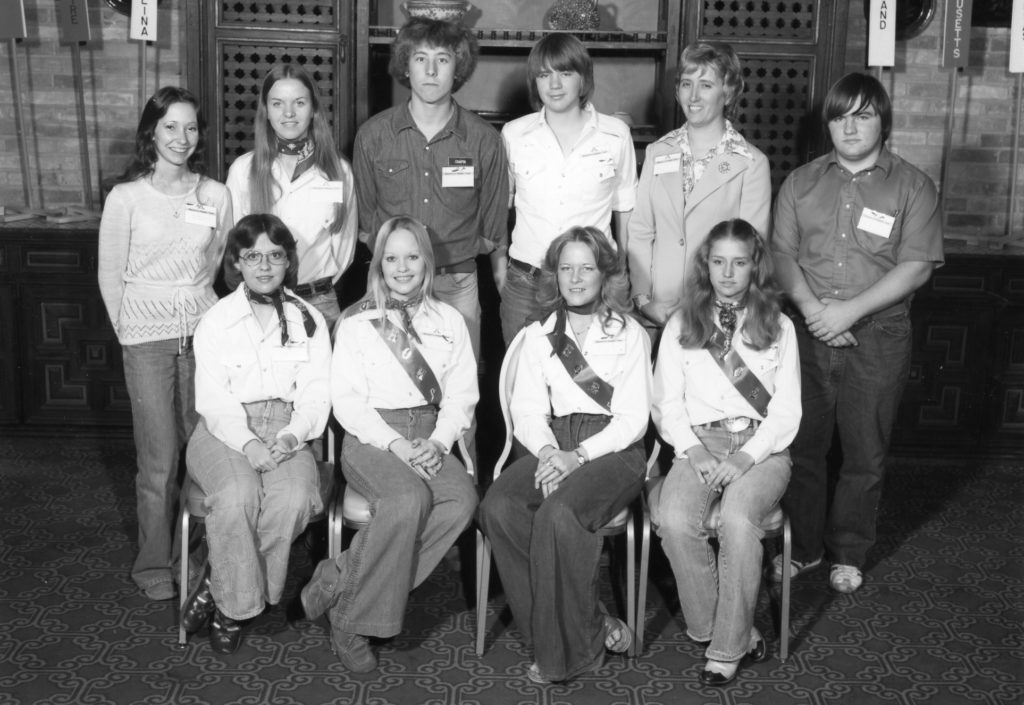
Early History
In 1957 the then United States Office of Education realized that educational programs in health occupations were growing throughout the nation at such a pace that the first Health Occupations Program Specialist, Helen K. Powers, was appointed to supervise the field. As programs expanded, needs for a student organization for health occupations students began to emerge for students enrolled in these programs.
In 1960, early student organizational needs were met through Future Nurses Clubs and Vocational Industrial Clubs of America (VICA). The demand grew for a group that would provide the specialized programs of Health Occupations students. An organization called the Health Careers Clubs gained national strength, especially in states such as Texas, New Jersey, North Carolina, Alabama, New York, New Mexico and others. These clubs focused especially on health career oriented programs operating in academic high schools.
Health programming continued to grow and diversify. Health occupations programs were established in vocational and technical schools in many states. Health occupations educators began to see a need for an organized and united effort to consider common and unique concerns of health occupations. The American Vocational Association (AVA) emerged as a logical locus for such a group.
 The need for a leadership organization to serve students enrolled in vocational Health Occupations Education programs was recognized at the time of the first meeting of the Health Occupations Education Division of the American Vocational Association (AVA-HOE) in December 1971. This group heard reports from several states of activities leading to the organization of health occupations students associations. The AVA-HOE Division addressed this need when the newly elected Vice President, Dale Peterson, appointed a Task Force to: (1) study student clubs; (2) determine how they might better serve HOE students; and (3) examine whether a new organization was needed.
The need for a leadership organization to serve students enrolled in vocational Health Occupations Education programs was recognized at the time of the first meeting of the Health Occupations Education Division of the American Vocational Association (AVA-HOE) in December 1971. This group heard reports from several states of activities leading to the organization of health occupations students associations. The AVA-HOE Division addressed this need when the newly elected Vice President, Dale Peterson, appointed a Task Force to: (1) study student clubs; (2) determine how they might better serve HOE students; and (3) examine whether a new organization was needed.
State associations were established in Texas (Texas Association of Health Occupations Students) in April, 1972; in New Jersey (Health Careers Clubs of New Jersey) in October 1972; Health Careers Clubs of North Carolina was organized in 1973; OHOSO (Oklahoma Health Occupations Student Organization) in 1974.
The Seventh Report (published in 1972) of the National Advisory Council for Vocational Education was devoted to a description of the expanding visibility and support of vocational student organizations. This report stated that a new organization, designed to serve students in health occupations, “has been organized at the state level and will shortly seek a national charter. And there will be others.”
Further action was taken by the HOE Division during the AVA Convention in Chicago in December 1972. Joan Stoddard submitted the Task Force report presented by James L. Navara, Oregon Board of Education, “A Feasibility Study for a Vocational Youth Organization for the Health Occupations Curriculum.” During the HOE Division business meeting, the members adopted a “Position Paper on Student Organizations in the Field of Health Occupations Education.” This paper stated that the HOE Division of AVA should “serve a facilitating role in assisting the various states and/or local groups to develop the type of organization each deems most appropriate to their settings.”
Members of the HOE Division took further action during the 1973 AVA Convention in Atlanta, Georgia. The HOE Vice President was directed to “inform by letter the AVA Board of Directors and the National Advisory Council on Vocational Education of action taken by the HOE Division at this meeting — namely, to endorse the creation of a leadership organization for health occupations students and work with the staff of AVA to develop procedures for implementing the above action.”
Vice President Wilma Gillespie presented a report, “A Statement of Need,” to the AVA Board of Directors during the July Board Meeting, 1974.
Appointed by the AVA Vice President of the HOE Division, a Core Planning Group was convened at the Brown County State Park, Nashville, Indiana, on July 23-25, 1974. This meeting was hosted and organized by the Indiana State Department of Education, Department of Vocational Education, under the Co-Chairmanship of V. Divine Bauer (HOE Supervisor, Alabama) and Mary Holstein (HOE Supervisor, Indiana). Resource persons included a USOE representative. In addition to Alabama and Indiana, the HOE supervisors for New Jersey and New York were present. Teachers and student representatives from some of these states were present and speakers from other national organizations addressed the group.
The report of the Core Planning Group was presented to the Policy Committee of the HOE Division at a meeting in St. Louis, Missouri, on March 6-7, 1975. The Policy Committee endorsed the recommendation of the Core Planning Group “to encourage those states with a viable statewide student organization to cooperate in forming a charter organization.” The meeting established a student organization planning committee “to facilitate the efforts by states who now have viable HOE student organizations to (1) expedite seeking a national charter, and (2) devise ways to assist other states in their organizing efforts.” Members of this committee were the HOE State Supervisor and/or his/her designee from the states of Alabama, New Jersey, Oklahoma and Texas.
At the third annual conference of the Texas Association of Health Occupations Students (TAHAS) in San Antonio, Texas, on March 14, 1975, AVA Vice President Wilma Gillespie presented the keynote address entitled “And There Will Be Others.” This message was a challenge to set in motion the activities necessary to seek a national charter.
On November 4-7, 1975, through the leadership of the State Department of Education and Division of Vocational Education in New Jersey, eighteen representatives from all six states having statewide health occupations education student organizations met to plan a national leadership organization. Representatives (state officers and state HOE supervisors from the six states which included Alabama, New Jersey, New Mexico, North Carolina, Oklahoma, and Texas) voted to form the American Health Occupations Education Student Organization-AHOESO (later changed to HOSA).
The Inn of the Six Flags in Arlington, Texas, was the site of the exciting Constitutional Convention held November 10‑13, 1976 and attended by 384 persons including delegates and advisors from the six states having organized state associations and interested persons from twelve other states. The Convention provided a formal structure for the new student organization. Joan M. Birchenall (NJ) presided as the crucial elements of the organization were formalized.
The name was shortened to “Health Occupations Students of America (HOSA)” and bylaws were adopted.
The first set of national officers was elected. Lynne McGee of North Carolina was the first National HOSA President.
National HOSA colors were selected: maroon, medical white and navy blue, which prevail today.
A contest was designed to select a National HOSA motto and a HOSA emblem.
Oklahoma was selected as the site and Spring 1978 as the date for the first National HOSA Conference. The Spring date in 1977‑78 was selected to provide time for dissemination of information, for state and local organizing efforts and as a culmination of the first full year of HOSA.
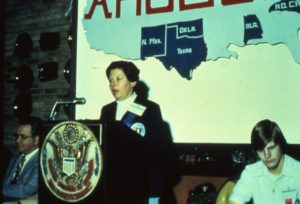 In December of 1977 at the 71st Annual Convention of the American Vocational Association, the House of Delegates passed a resolution that the AVA Board of Directors, (1) “Recognize – Health Occupations Students of America as the national student organization for Health Occupations Education -“; (2) “Promote the inclusion of – Health Occupations Students of America in the list of vocational student organizations recognized by the U.S. Office of Education”; and (3) “Support the inclusion of – Health Occupations Students of America in state planning for vocational education.”
The first National Leadership Conference for HOSA was held in Oklahoma City, Oklahoma, on April 27-30, 1978. Since the Constitutional Convention (1976) charter states have increased over fifty percent (50%) and charters have been presented to Florida, Illinois, Indiana, Kentucky, Maryland, Tennessee, Minnesota and Oregon. The emblem submitted by students of McNairy Central High in Tennessee was selected by the national voting delegates as the official emblem. Competitive events were held for both secondary and postsecondary members in Informative and Extemporaneous Speaking; Job Interviews; Medical Terminology; Poster; Emblem; and Motto. The National HOSA Uniform was selected and adopted at this meeting.
The second National Health Occupations Students of America (HOSA) conference was held June 26-July 1, 1979, in Cherry Hill, New Jersey. Five state charters were presented: Delaware, Pennsylvania, South Carolina, Wisconsin, and New York. In October of 1979, the HOSA Board selected KENORA Enterprises of Wilmington, Delaware, as the management firm to staff HOSA’s National Office.
During the Third National Conference in Asheville, North Carolina, July 8-12, 1980, a major reorganization plan was adopted. HOSA, Inc. was formed to be the legally responsible agent for the student organization. The HOSA Bylaws were changed to HOSA Constitution and Bylaws to reflect the changes in the incorporation status. Under this new organization, the HOSA, Inc. Board of Directors was reorganized; HOSA received exempt status from the U.S. Internal Revenue; the logo was registered with the U.S. Copyright Office; and the Congressional Advisory Board was formed. As a result of a competitive event, the HOSA Creed was selected as submitted by South Carolina HOSA. Parliamentary Procedure and Community Awareness Events were conducted as pilot events. Four new states were chartered: District of Columbia, Virginia, Louisiana and New Hampshire.
In December of 1977 at the 71st Annual Convention of the American Vocational Association, the House of Delegates passed a resolution that the AVA Board of Directors, (1) “Recognize – Health Occupations Students of America as the national student organization for Health Occupations Education -“; (2) “Promote the inclusion of – Health Occupations Students of America in the list of vocational student organizations recognized by the U.S. Office of Education”; and (3) “Support the inclusion of – Health Occupations Students of America in state planning for vocational education.”
The first National Leadership Conference for HOSA was held in Oklahoma City, Oklahoma, on April 27-30, 1978. Since the Constitutional Convention (1976) charter states have increased over fifty percent (50%) and charters have been presented to Florida, Illinois, Indiana, Kentucky, Maryland, Tennessee, Minnesota and Oregon. The emblem submitted by students of McNairy Central High in Tennessee was selected by the national voting delegates as the official emblem. Competitive events were held for both secondary and postsecondary members in Informative and Extemporaneous Speaking; Job Interviews; Medical Terminology; Poster; Emblem; and Motto. The National HOSA Uniform was selected and adopted at this meeting.
The second National Health Occupations Students of America (HOSA) conference was held June 26-July 1, 1979, in Cherry Hill, New Jersey. Five state charters were presented: Delaware, Pennsylvania, South Carolina, Wisconsin, and New York. In October of 1979, the HOSA Board selected KENORA Enterprises of Wilmington, Delaware, as the management firm to staff HOSA’s National Office.
During the Third National Conference in Asheville, North Carolina, July 8-12, 1980, a major reorganization plan was adopted. HOSA, Inc. was formed to be the legally responsible agent for the student organization. The HOSA Bylaws were changed to HOSA Constitution and Bylaws to reflect the changes in the incorporation status. Under this new organization, the HOSA, Inc. Board of Directors was reorganized; HOSA received exempt status from the U.S. Internal Revenue; the logo was registered with the U.S. Copyright Office; and the Congressional Advisory Board was formed. As a result of a competitive event, the HOSA Creed was selected as submitted by South Carolina HOSA. Parliamentary Procedure and Community Awareness Events were conducted as pilot events. Four new states were chartered: District of Columbia, Virginia, Louisiana and New Hampshire. 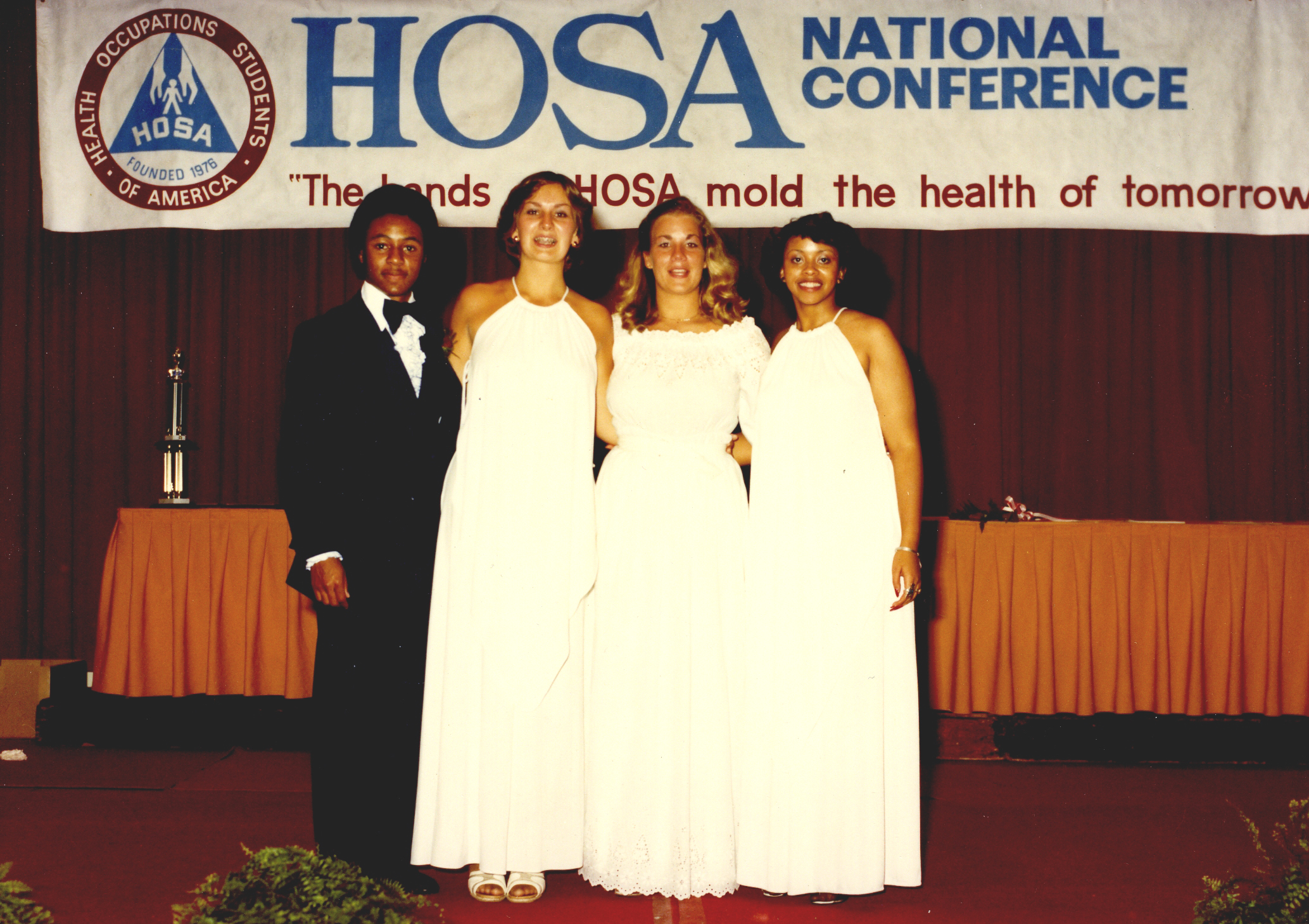 At the Fourth Annual National HOSA Conference in Albuquerque, New Mexico, the American Diabetes Association was selected as the National Charity Project. HOSA’s 501(c)(3) tax exempt status was received in June 1981, and eight new competitive events were added to the National Competitive Event Program. Four new states were chartered: Michigan, Colorado, Maine and Kansas. A new position was added to the Board of Directors – Student Delegate-at-large.
At the Fourth Annual National HOSA Conference in Albuquerque, New Mexico, the American Diabetes Association was selected as the National Charity Project. HOSA’s 501(c)(3) tax exempt status was received in June 1981, and eight new competitive events were added to the National Competitive Event Program. Four new states were chartered: Michigan, Colorado, Maine and Kansas. A new position was added to the Board of Directors – Student Delegate-at-large.
On September 28, 1981, at the U.S. Department of Education, representatives of the nine vocational student organizations met in the office of Secretary of Education, Terrell H. Bell. The occasion was very special as Secretary Bell and Assistant Secretary for Vocational and Adult Education, Robert M. Worthington, signed the first official Policy Statement issued by the new U.S. Department of Education. Most importantly, this Policy Statement officially recognized and reaffirmed a cooperative and mutually beneficial relationship between the Department of Education and the Vocational Student Organizations. Don Cork, National HOSA President, was selected by the National Coordinating Council for Vocational Student Organizations to make special remarks in accepting the Policy Statement from Secretary Bell on behalf of all the student organizations. Also, in September of 1981, the HOSA Long Range Planning Committee met in conjunction with the National Conference Planning Committee in Chicago and developed the first five year long range plan for HOSA.
On February 10, 1982, the Vice President of the United States, George Bush, met with the National HOSA President, Don Cork; the National HOSA President-Elect, Kelly McLoud; and two representatives from each of our sister vocational student organizations. Don Cork and Kelly McLoud talked about HOSA and Health Occupations Education and presented Mr. Bush with an Honorary Life Membership in HOSA — the highest award presented to an individual by the organization.
On June 8, 1982, Don Cork also represented HOSA in presenting testimony in support of federal funding for vocational education before the House Education and Labor Sub-Committee.
The Fifth Annual National Conference was held in Chicago, Illinois, June 24-26, 1982. Eight new HOE skill events were piloted and the national voting delegates approved to expand the postsecondary category of HOSA membership. These changes provided for elected postsecondary national officers and a postsecondary student delegate-at-large position on the Board of Directors. The delegates also voted to increase the membership assessment fee. The official HOSA uniform policy was revised.
The development of HOSA has been methodical and the result of considerable involvement by those who believe in the instructional worth of the student organization. Given this foundation, the future of HOSA appears bright as new ways are sought to serve our membership.
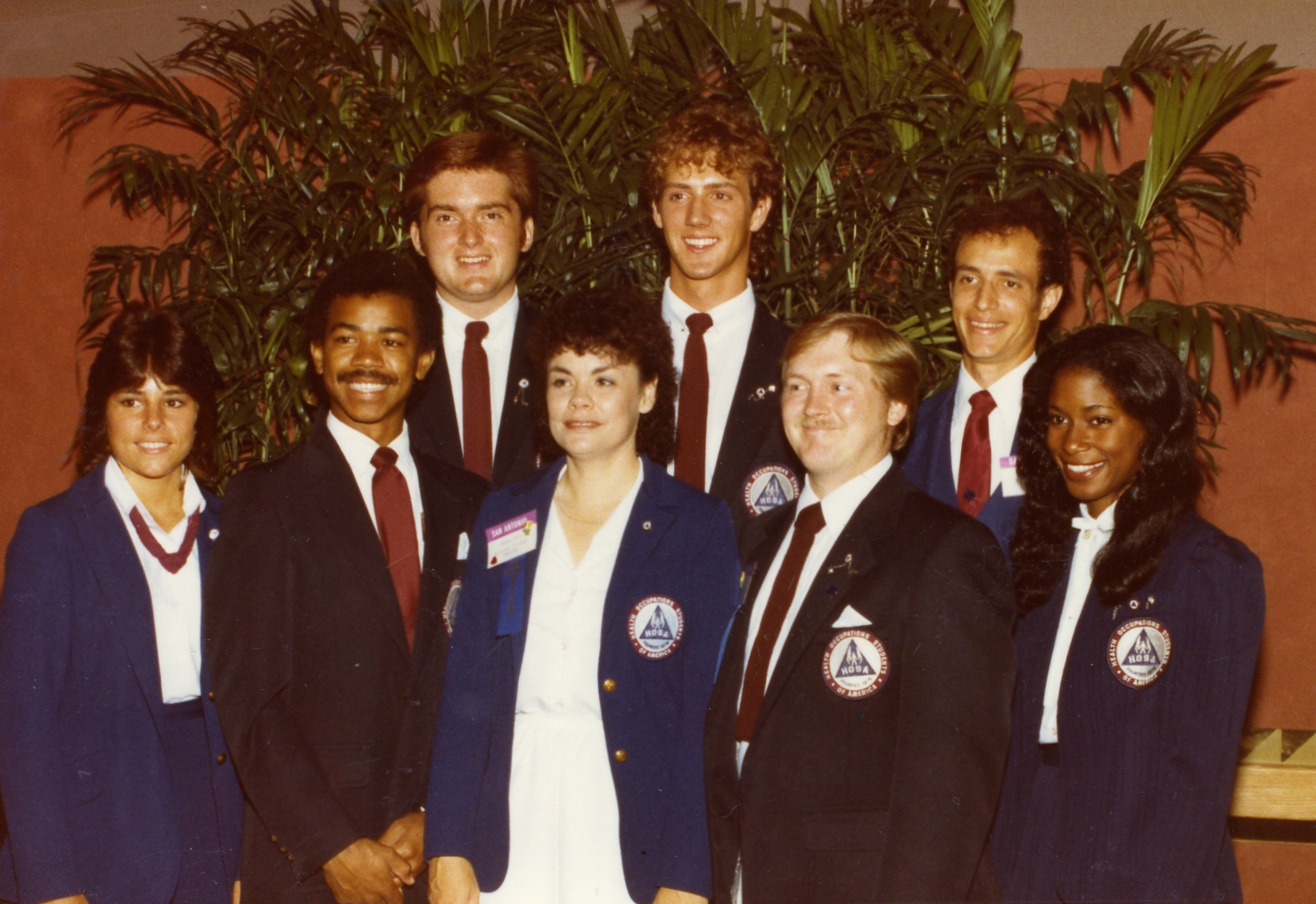 Creative, experienced in leadership development activities, public relations approaches and in use of diversified media, this management team has built on the firm foundation established by KENORA Enterprises. It has assisted HOSA in reaching recognized strength and respected status in service to HOE students. Since 1985, when the HOSA Board decided to continue management firm coordination in preference to establishing a separate headquarters, with building and staff concerns, Dr. Koeninger and Ms. Elias-Koeninger have been officially designated as HOSA’s Executive Director and Associate Director, respectively.
In August 1986, the location of LDI, Inc. and HOSA Headquarters was changed to Fort Worth, Texas. LDI moved to Irving, Texas in 1989. In 1996, the scope of LDI, Inc. was enlarged and the company was renamed Corporate Education Resources, Inc. (CERI) and relocated to Flower Mound, Texas. HOSA, through the Management office, offers a toll‑free number to maintain contact with local chapters while delivering a variety of services to its members, advisors and state associations. (800‑321‑HOSA)
Creative, experienced in leadership development activities, public relations approaches and in use of diversified media, this management team has built on the firm foundation established by KENORA Enterprises. It has assisted HOSA in reaching recognized strength and respected status in service to HOE students. Since 1985, when the HOSA Board decided to continue management firm coordination in preference to establishing a separate headquarters, with building and staff concerns, Dr. Koeninger and Ms. Elias-Koeninger have been officially designated as HOSA’s Executive Director and Associate Director, respectively.
In August 1986, the location of LDI, Inc. and HOSA Headquarters was changed to Fort Worth, Texas. LDI moved to Irving, Texas in 1989. In 1996, the scope of LDI, Inc. was enlarged and the company was renamed Corporate Education Resources, Inc. (CERI) and relocated to Flower Mound, Texas. HOSA, through the Management office, offers a toll‑free number to maintain contact with local chapters while delivering a variety of services to its members, advisors and state associations. (800‑321‑HOSA)  In 1978, the official emblem was adopted by the Delegate Assembly action. The design is used today and is described as follows: “The circle represents the continuity of health care; the triangle represents the three aspects of humankind’s well‑being, social, physical and mental; and the hands signify the caring of each HOSA member.” Colors, of course, are maroon, medical white and navy blue. This design was submitted by the Tennessee Association of HOSA. The HOSA emblem/logo was registered with the U.S. Copyright Office in 1980 and continues to be protected by federal law.
It was not until the Third National HOSA Leadership Conference, held in Asheville, North Carolina in 1980, that HOSA’s official creed was adopted, as submitted by South Carolina HOSA.
In 1978, the official emblem was adopted by the Delegate Assembly action. The design is used today and is described as follows: “The circle represents the continuity of health care; the triangle represents the three aspects of humankind’s well‑being, social, physical and mental; and the hands signify the caring of each HOSA member.” Colors, of course, are maroon, medical white and navy blue. This design was submitted by the Tennessee Association of HOSA. The HOSA emblem/logo was registered with the U.S. Copyright Office in 1980 and continues to be protected by federal law.
It was not until the Third National HOSA Leadership Conference, held in Asheville, North Carolina in 1980, that HOSA’s official creed was adopted, as submitted by South Carolina HOSA. HOSA was one of two (2) new student organizations (the other was the American Industrial Arts Student Association ‑ AIASA) recognized by the U.S. Office of Education in September 1977. At the time of recognition, the Department also issued its new policy statement designed to endorse all vocational student organizations. Ernest L. Boyer was U.S. Commissioner at the time. Such endorsement has been reaffirmed periodically, as in 1988, under Secretary William J. Bennett and again in 1990, under Secretary Laura F. Cavazos.
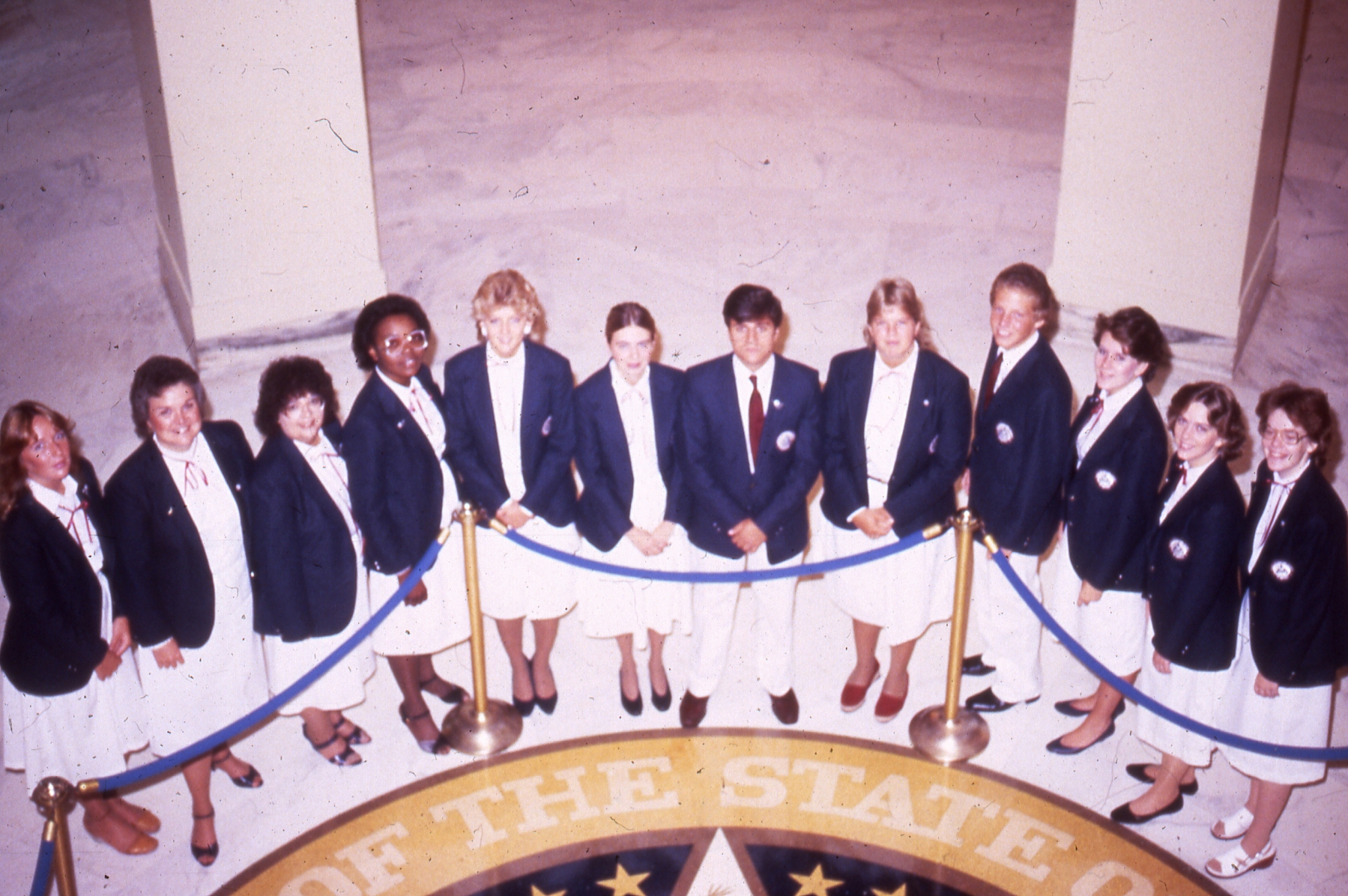 In 1980, incorporation of HOSA was transferred from New Jersey to Delaware and the Board of Directors was reorganized as HOSA, Inc. This body and its Board of Directors was formed to be the legally responsible agent for the student organization of HOSA. At the Third Conference in North Carolina (1980), HOSA Bylaws were changed to reflect the organization’s incorporation status. The HOSA Constitution and Bylaws and HOSA, Inc. Bylaws were revised. Tax exempt status for the organization was also achieved. Initially comprising a relatively limited membership of HOE state supervisors, advisors and student officers with selected affiliate non‑voting representatives, the HOSA, Inc. Board of Directors now includes Board membership composed of state and local advisors, national student officers, health care industry representatives, teacher educators and state supervisors. A list of HOSA Board Chairmen and National Student Presidents is located in this section of the HOSA Handbook.
In 1980, incorporation of HOSA was transferred from New Jersey to Delaware and the Board of Directors was reorganized as HOSA, Inc. This body and its Board of Directors was formed to be the legally responsible agent for the student organization of HOSA. At the Third Conference in North Carolina (1980), HOSA Bylaws were changed to reflect the organization’s incorporation status. The HOSA Constitution and Bylaws and HOSA, Inc. Bylaws were revised. Tax exempt status for the organization was also achieved. Initially comprising a relatively limited membership of HOE state supervisors, advisors and student officers with selected affiliate non‑voting representatives, the HOSA, Inc. Board of Directors now includes Board membership composed of state and local advisors, national student officers, health care industry representatives, teacher educators and state supervisors. A list of HOSA Board Chairmen and National Student Presidents is located in this section of the HOSA Handbook. 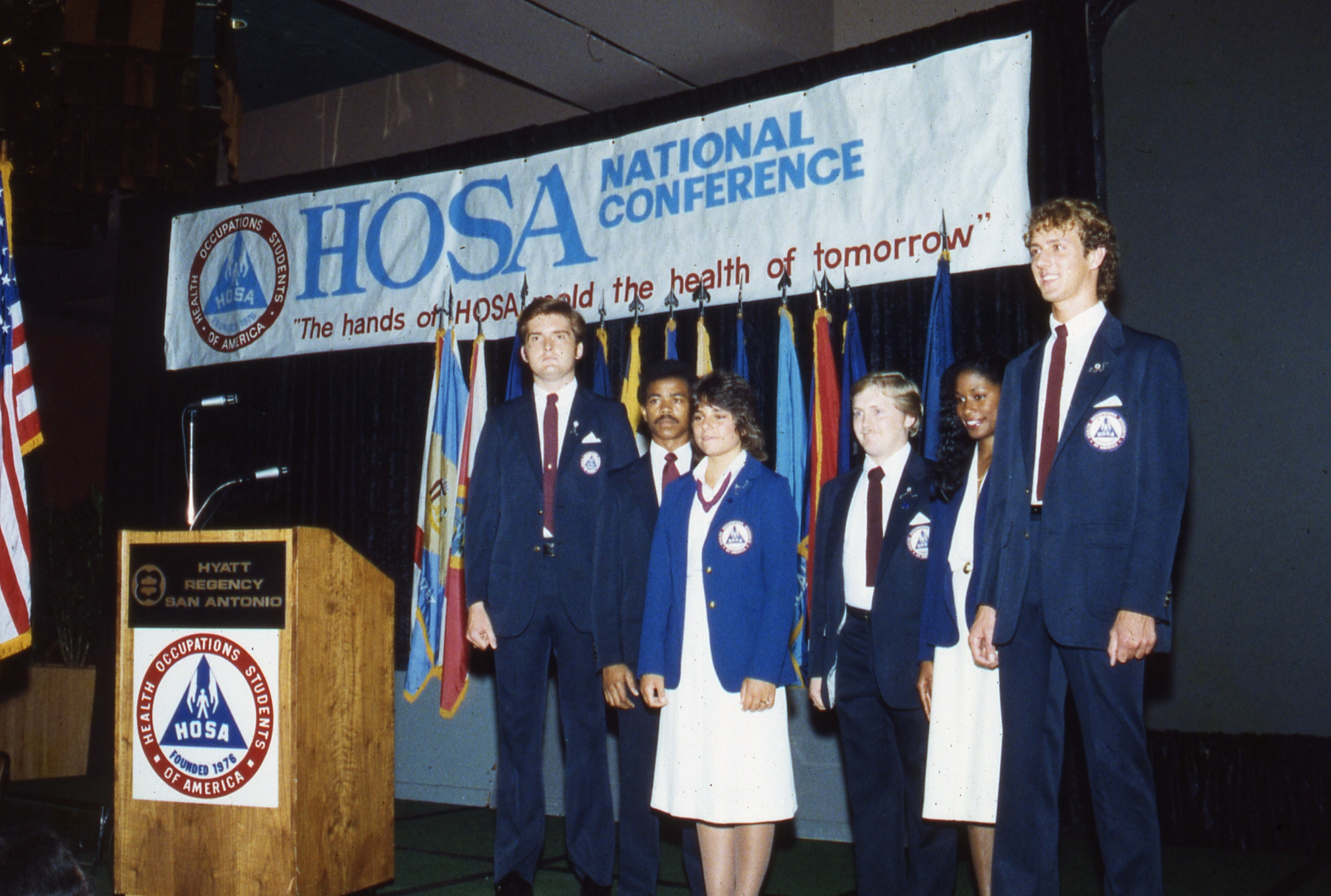 Currently there are six categories, which include the following:
Currently there are six categories, which include the following:
- Health Science Events
- Health Professions Events
- Emergency Preparedness Events
- Leadership Events
- Teamwork Events
- Recognition Events
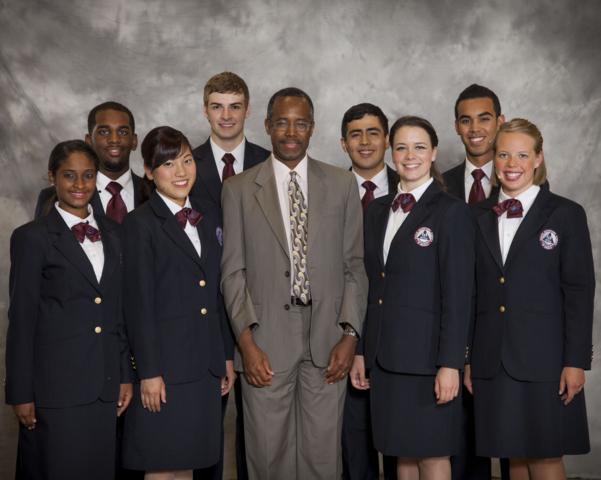 HOSA is the only national student organization that exclusively serves secondary and post-secondary/collegiate students in pursuit of a career in the health professions. In June 2004, HOSA had a unique opportunity to expand its mission and membership in response to the critical shortages facing the health care industry. Motions were presented to the Delegate Assembly at the HOSA National Leadership Conference to expand the national organization to include all students who are interested, planning to pursue or pursuing a career in the health professions.
HOSA is the only national student organization that exclusively serves secondary and post-secondary/collegiate students in pursuit of a career in the health professions. In June 2004, HOSA had a unique opportunity to expand its mission and membership in response to the critical shortages facing the health care industry. Motions were presented to the Delegate Assembly at the HOSA National Leadership Conference to expand the national organization to include all students who are interested, planning to pursue or pursuing a career in the health professions.
In June 2004, members of the delegate assembly at the HOSA National Leadership Conference formalized HOSA’s commitment to assuming a more aggressive leadership role by implementing solutions to resolve the challenges and issues facing the health care industry by making the following changes:
- References to Health Occupations Education were changed to Health Science.
- The term “vocational” was changed to: “career and technical education”.
- HOSA-Future Health Professionals became the official name of the organization.

